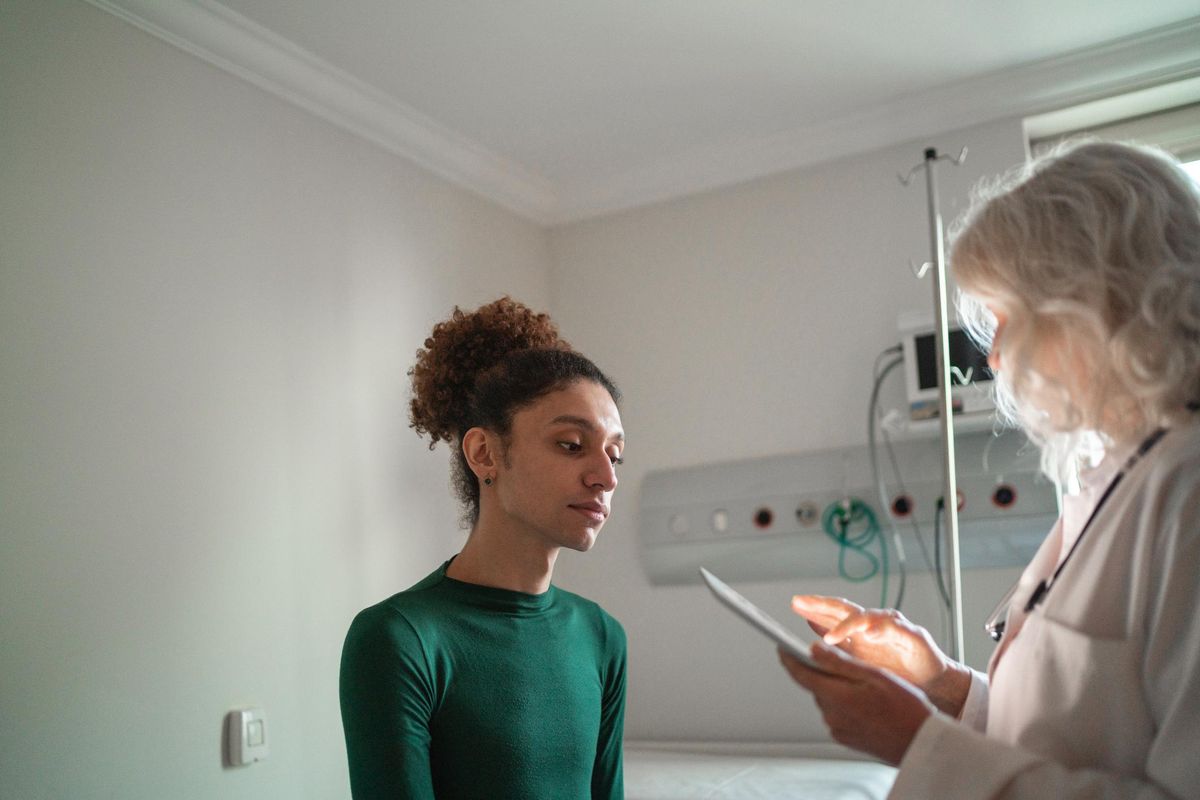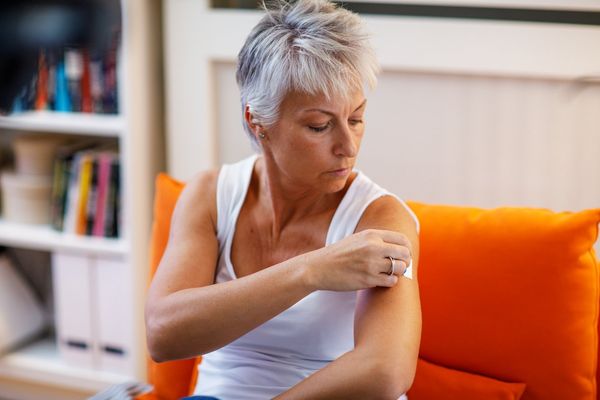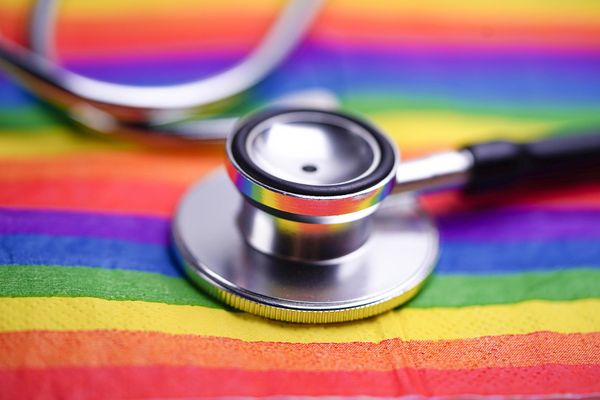Reviewed by Dr. Sue Yom
As executive director of the National LGBT Cancer Network, Scout, who goes by only one name, knows better than most about the importance of staying up to date on cancer screenings.
And yet, Scout admits he's frequently put off his own screenings for human papillomavirus (HPV) and cervical cancer. Because he's a transgender man with a cervix, the process of getting a Pap test can trigger gender dysphoria for him while also subjecting him to odd looks and hostile comments from staff.
"As a trans guy, I can absolutely say that's one of those things that I grit my teeth about, even though I understand how important screening is," Scout said. "For the LGBTQ community, just going for an appointment like this can lead to questioning or being put in a position where you're pushed to disclose something about your life you don't want to."
While data on cancer in the LGBTQ community is limited, an American Cancer Society (ACS) fact sheet highlights the unique risk factors and healthcare barriers that could contribute to higher rates of cancer. In addition to facing bias from healthcare providers, LGBTQ individuals are more likely to experience economic hardships through lower employment rates and rejection from families — factors that reduce access to quality health care.
Lesbians are also less likely than heterosexual women to receive Pap tests or HPV testing to screen for cervical cancer. They also have lower rates of initiating and completing the HPV vaccine series that would reduce their risk of developing cervical cancer.
Experts say a lack of access to quality health care and misinformation about HPV — such as the belief that women can't pass the virus to other women — contribute to this disparity.
"Many sexual minorities, especially those in their teens and early 20s, are often excluded from the healthcare system because they're independent from their families or working in jobs where they lack insurance," said Dr. Sue Yom, a radiation oncologist who studies HPV at University of California San Francisco Health. "Then there are the effects of interactions with the healthcare system, a lower level of trust, and the known fact that providers don't spend as much time talking to patients or families where there's uncomfortable feelings in the room. That leads to lower rates of both screening and HPV vaccination."
Bridging the information gap about HPV and cervical cancer
The ACS estimates that about 14,480 people in the United States will be diagnosed with cervical cancer in 2021 and about 4,300 will die. Improved screening and early detection have reduced cervical cancer mortality rates in the United States, although it's still the fourth most common cancer for people with cervixes.
Nearly all cervical cancer diagnoses are related to HPV, a virus contracted by almost all adults who've had sex. Most people don't know they've had HPV without a test since HPV infections do not cause symptoms and are usually cleared by the immune system within 24 months. If the body doesn't clear the virus, though, there is a risk that cells in the cervix will become abnormal and can progress over time to precancer and cancer.
Screening for cervical cancer may involve a Pap plus HPV test together (cotesting) every five years, a Pap test alone every three years, or an HPV test alone every five years.
Dr. Patty Robertson, a University of California San Francisco Health obstetrician specializing in lesbian health issues, likes to start conversations about the importance of cervical health with a twist on the popular declaration of queer affirmation often heard during Pride parades: "We're here, we're queer, have you gotten your Pap smear?"
A founder of Lyon-Martin Health Services, a pioneering health clinic launched in 1979 that provides affordable, non-judgmental health care to women, gender non-conforming people, and transgender people of all gender identities and sexual orientations, Robertson continues to dispel myths and misinformation within the LGBTQ community about HPV, cervical cancer and Pap tests. Her education efforts also include promoting safer sexual practices to prevent the spread of HPV.
"There are physicians that don't believe lesbians need Pap smears because they aren't having sex with men," Robertson said. "That ignores that HPV can be transferred between women and that most lesbians have had sex with men at some point in their lives. HPV can also be spread through oral sex and through the use of sex toys."
Yom also warns about the growth in oropharyngeal HPV-related cancers through oral sex even as the rate of cervical cancer declines. Lesbian and bisexual women are at more than three times higher risk for this type of HPV-related cancer. They should understand the unique risks they face for developing an HPV-related cancer, Yom said, and protect themselves through safer sex practices, screenings and vaccination.
Finding quality care as a member of the LGBTQ community
In a growing number of regions, LGBTQ health clinics exist to provide affordable, non-judgmental care. But even if a provider doesn't work in an LGBTQ-identified clinic, Scout encourages providers to demonstrate their openness to LGBTQ patients by including non-discrimination statements that include sexual orientation and gender identity on their websites or with welcoming statements and posters in their waiting rooms.
LGBTQ community members can also be their own advocates by encouraging partners and friends to follow the cervical cancer screening schedule and complete the HPV vaccination series. People up to age 45 can be vaccinated against HPV, and Yom hopes more education about the importance of the vaccine can help reduce rates of vaginal, vulvar, anal and oropharyngeal cancers among lesbian, bisexual and transgender individuals.
"Just because you're only having sex with women, it does not protect you from transmission of HPV," Yom said. "Thinking you don't need a vaccination for that reason is misinformation and because many young people don't have the relationship with the healthcare system to correct that misinformation, they don't get vaccinated even though they're in a very high-risk group being in their teens and twenties. They're exactly the population that should be vaccinated."
"The more we can support each other, the better," Scout said. "We don't necessarily ask our friends if they've done all their cancer screenings, but maybe it's time to do that."
- 9 Warning Signs of Cervical Cancer You Shouldn't Ignore ... ›
- Don't Put Off Your Screening and Vaccination for Cervical Cancer ... ›
- What’s Sexual Orientation Got to Do With It? LGTBQ People Face Discrimination in Healthcare - HealthyWomen ›
- A Conversation About HPV & Cervical Cancer Screening - HealthyWomen ›
- Facts About Diabetes Quiz - HealthyWomen ›
- Take Steps Toward Preventing Cervical Cancer - HealthyWomen ›
- Don't Postpone These Types of Preventive Care - HealthyWomen ›







